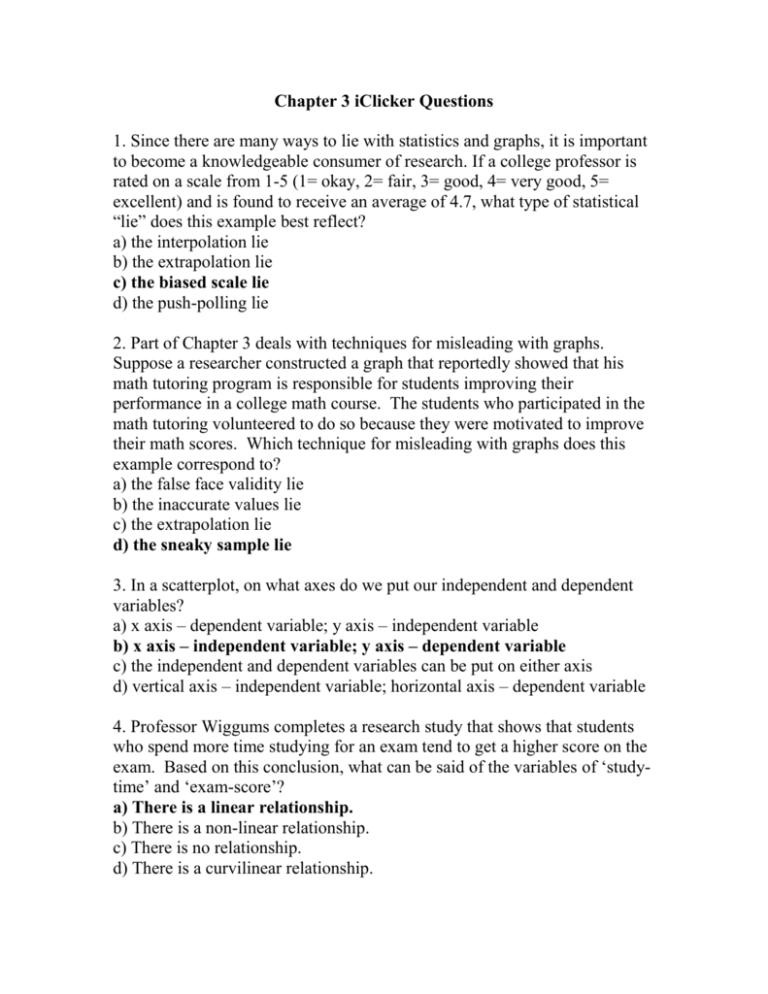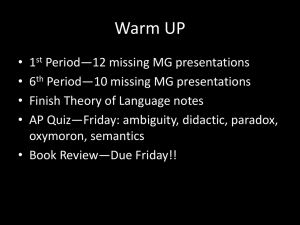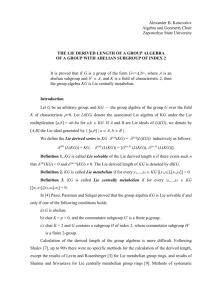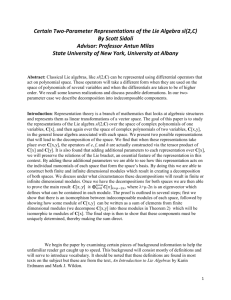Chapter 3 iClicker Questions
advertisement

Chapter 3 iClicker Questions 1. Since there are many ways to lie with statistics and graphs, it is important to become a knowledgeable consumer of research. If a college professor is rated on a scale from 1-5 (1= okay, 2= fair, 3= good, 4= very good, 5= excellent) and is found to receive an average of 4.7, what type of statistical “lie” does this example best reflect? a) the interpolation lie b) the extrapolation lie c) the biased scale lie d) the push-polling lie 2. Part of Chapter 3 deals with techniques for misleading with graphs. Suppose a researcher constructed a graph that reportedly showed that his math tutoring program is responsible for students improving their performance in a college math course. The students who participated in the math tutoring volunteered to do so because they were motivated to improve their math scores. Which technique for misleading with graphs does this example correspond to? a) the false face validity lie b) the inaccurate values lie c) the extrapolation lie d) the sneaky sample lie 3. In a scatterplot, on what axes do we put our independent and dependent variables? a) x axis – dependent variable; y axis – independent variable b) x axis – independent variable; y axis – dependent variable c) the independent and dependent variables can be put on either axis d) vertical axis – independent variable; horizontal axis – dependent variable 4. Professor Wiggums completes a research study that shows that students who spend more time studying for an exam tend to get a higher score on the exam. Based on this conclusion, what can be said of the variables of ‘studytime’ and ‘exam-score’? a) There is a linear relationship. b) There is a non-linear relationship. c) There is no relationship. d) There is a curvilinear relationship. 5. A type of graph that plots a scale variable (on the y-axis) as it changes over an increment of time (plotted on the x-axis) is called a: a) histogram. b) scatterplot. c) pie chart. d) time series plot. 6. A Pareto chart is defined as: a) a visual depiction of data typically used for an independent variable with very few levels and a scale dependent variable. b) a type of bar graph in which the categories along the x-axis are ordered from highest bar on the left to lowest bar on the right. c) a graph in the shape of a circle with a slice for every category. d) a graph that is filled with dots that depicts the relationship between two scale variables. 7. What, if anything, is wrong with the graph below? a) The graph does not identify the independent and dependent variables. b) The graph contains excessive “chartjunk” such as moiré vibrations and is difficult to interpret as a result. c) The Y axis does not begin with 0 and, as a result, the differences between means are exaggerated. d) There is nothing wrong with the graph. 8. What type of graph produces a visual depiction of data typically used for an independent variable with very few levels and an interval dependent variable? a) pareto chart b) pie chart c) scatterplot d) pictorial graph 9. Which type of graph would be best to construct if you have two or more nominal independent variables and one scale dependent variable? a) a bar graph b) a histogram c) a Pareto chart d) a pie chart 10. The charts below contain a series of different patterns that computers provide as options to fill in bars. How do statisticians and researchers refer to these potentially distracting patterns? a) moiré vibrations b) ducks c) tufte’s d) grids 11. As computer graphing technologies become more advanced, a) There are increasingly elegant ways to depict multiple variables on a single graph. b) It has become impossible to lie on a graph. c) The x-axis and the y-axis have changed places. d) Psychologists have found other, non-graphical, methods to present their data.








